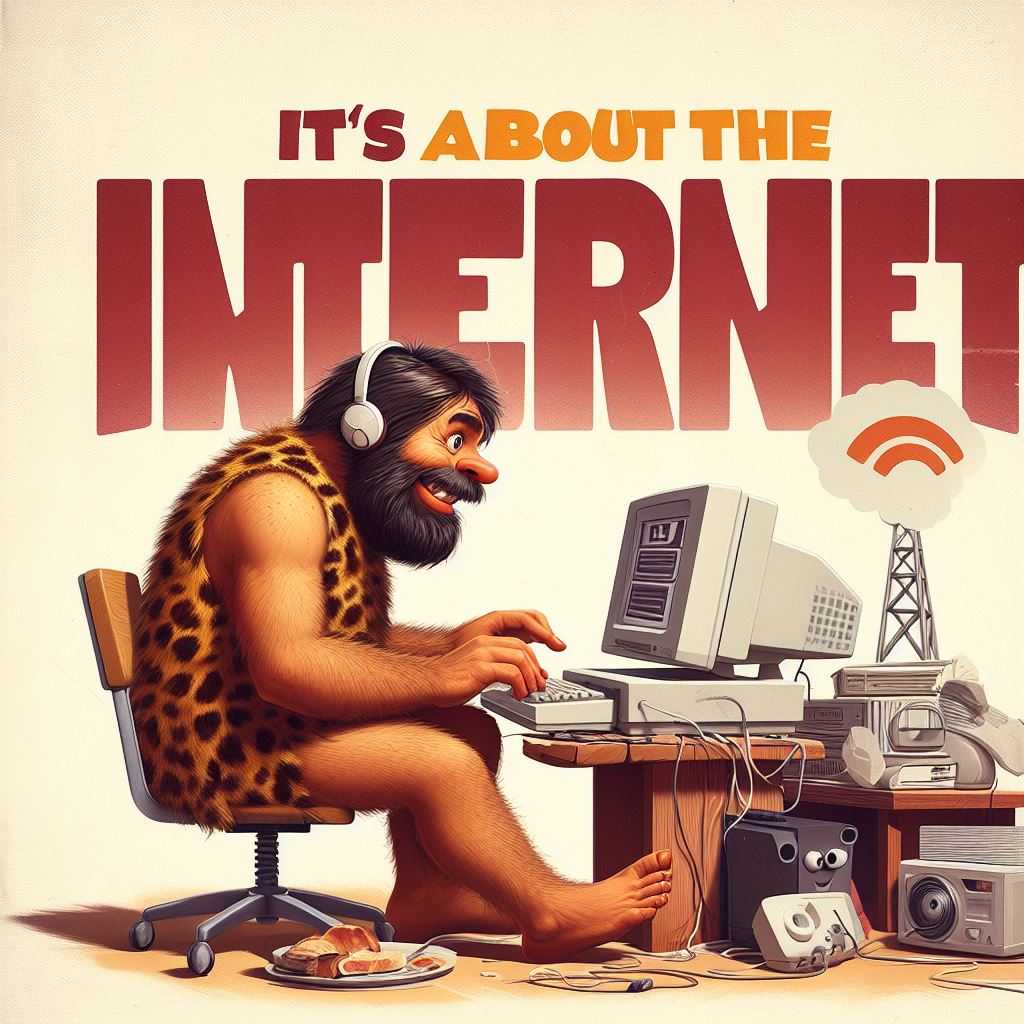So what is the “Internet”?
The internet is a worldwide network of interconnected computers and devices that facilitates data transmission, communication, and access to a diverse range of services and information. It’s a decentralized system with a global reach, profoundly impacting how people interact, work, and access resources.
Brief History of Internet
The history of the internet is a complex and multifaceted one, spanning several decades and involving numerous technological developments, innovations, and key figures. Here’s a condensed overview of the history of the internet:

- Origins (1950s-1960s):
- The concept of a global communication network dates back to the 1950s and 1960s when researchers like J.C.R. Licklider and Leonard Kleinrock began to discuss the idea of a “Galactic Network.”
- The Advanced Research Projects Agency (ARPA), now known as DARPA, played a pivotal role in funding research and development efforts.
- ARPANET (1969):
- The ARPANET, or the precursor to the modern internet, was established in 1969 when the first message was sent over the ARPANET from the University of California, Los Angeles (UCLA) to the Stanford Research Institute.
- ARPANET was designed to facilitate communication between various research institutions.
- TCP/IP Protocol (1970s):
- In the early 1970s, the Transmission Control Protocol (TCP) and Internet Protocol (IP) were developed by Vinton Cerf and Bob Kahn. These protocols laid the foundation for the modern internet.
- Spread of the Internet (1980s):
- The 1980s saw the expansion of the internet to more research and academic institutions, as well as the adoption of the TCP/IP protocol suite.
- The Domain Name System (DNS) was introduced to simplify internet addresses.
- World Wide Web (1990s):
- In 1990, Tim Berners-Lee, a British computer scientist, created the World Wide Web, which allowed for the easy sharing of information via hyperlinked documents (web pages).
- Web browsers, like Mosaic and Netscape, made the internet more user-friendly.

- Commercialization and the Dot-com Bubble (late 1990s):
- The late 1990s saw a rapid increase in commercial activity on the internet, leading to the dot-com bubble.
- Companies like Amazon and eBay emerged as major online retailers.
- Broadband and Mobile Internet (2000s):
- Broadband internet became widely available, improving internet speed and accessibility.
- The proliferation of smartphones led to the rise of mobile internet and mobile apps.
- Social Media and Web 2.0 (2000s-2010s):
- The 2000s and 2010s saw the emergence of social media platforms like Facebook, Twitter, and Instagram, changing the way people interact and share information online.
- The term “Web 2.0” was coined to describe the interactive and user-generated content aspects of the internet.
- Cloud Computing and Big Data (2010s):
- Cloud computing services, like Amazon Web Services and Microsoft Azure, made it easier for individuals and businesses to store and access data and applications online.
- Big data analytics became a major field, enabling insights from vast amounts of online data.
- IoT and Future Developments (2010s-present):
- The Internet of Things (IoT) expanded, connecting everyday devices to the internet.
- Ongoing developments include 5G networks, artificial intelligence, and the potential growth of the decentralized web (Web 3.0).
Internet Protocol
The Internet Protocol (IP) is like a set of rules that computers follow when they send and receive information over the internet. It’s a way for computers to know where to send data and how to package it for safe delivery. IP makes sure that your emails, web pages, and everything else you send or receive online get to the right place.
- IPv4 (Internet Protocol version 4):
- IPv4 is the fourth version of the Internet Protocol, which is used to identify and locate devices on a network. It’s the most widely used version of the Internet Protocol.
- IPv4 addresses are 32-bit numerical labels that are typically written as four sets of decimal numbers (0-255) separated by periods, e.g., 192.168.1.1.
- IPv4 allows for approximately 4.3 billion unique addresses. However, due to the rapid growth of the internet, these addresses have become exhausted, and there’s a need for a new system.

- IPv6 (Internet Protocol version 6):
- IPv6 is the latest version of the Internet Protocol and was developed to address the limitations of IPv4, primarily the exhaustion of available addresses.
- IPv6 addresses are 128-bit and are typically written in hexadecimal notation, e.g., 2001:0db8:85a3:0000:0000:8a2e:0370:7334.
- IPv6 provides a vastly larger address space, allowing for approximately 340 undecillion (3.4 x 10^38) unique addresses, ensuring that we won’t run out of IP addresses anytime soon.
- IPv6 also offers improved security and network efficiency.

- IP Address Classes (Class A, Class B, Class C, and others):
- In the early days of IPv4, IP addresses were divided into different classes to allocate them based on the size of the network they would be used for. These classes were used for classful addressing.
- There were five classes: A, B, C, D, and E. However, Classes D and E are reserved for multicast and experimental purposes and are not commonly used for typical networking.
- Class A: The first octet (the first 8 bits) in a Class A address is the network portion, and the remaining 24 bits are used for host addresses. This allows for a large number of networks with a small number of hosts.
- Class B: The first two octets are used for the network portion, and the remaining 16 bits are for host addresses. Class B addresses are suitable for medium-sized networks.
- Class C: The first three octets are for the network portion, and the remaining 8 bits are for host addresses. Class C addresses are typically used for smaller networks.


To sum it up, we’ve taken a thrilling voyage into the heart of technology, where we’ve set our sights on the internet – that boundless web connecting our world. We’ve uncovered its unique quirks, the cool things it lets us do, and even some of the quirks that come along with it.
Now, whether you’re ready to dive deeper into the internet, sail off to explore other digital horizons, or you’ve got burning tech questions, remember that Nice Future Inc. is your trusty sidekick, here to offer rock-solid support. Our mission? To spread knowledge and cutting-edge tech to plant the seeds of a brighter and more imaginative future. As technology keeps shape-shifting, we’re on standby, ready to serve up expert advice and solutions for all your software and tech needs.
So, gear up! Together, we’re mapping out an exciting route to a future supercharged by tech and innovation. Keep an eye out for our upcoming posts, and let’s embark on a journey towards an era bursting with astounding achievements. Stay tuned – we’ll be back before you know it! 🚀🌟
Subscribe to our newsletter!




